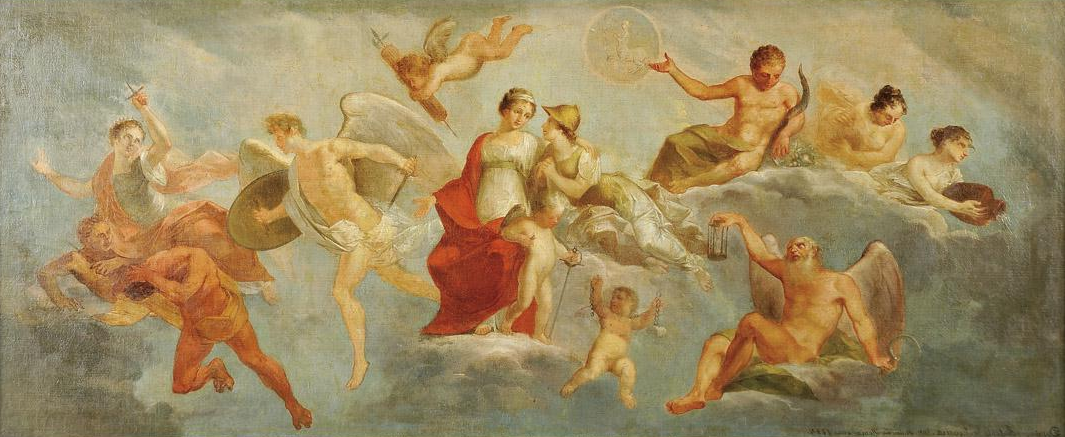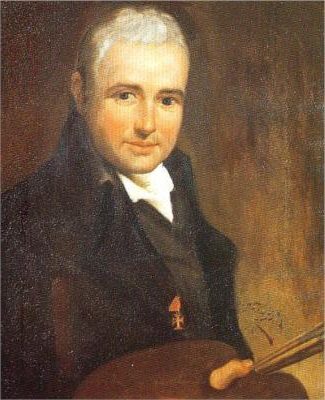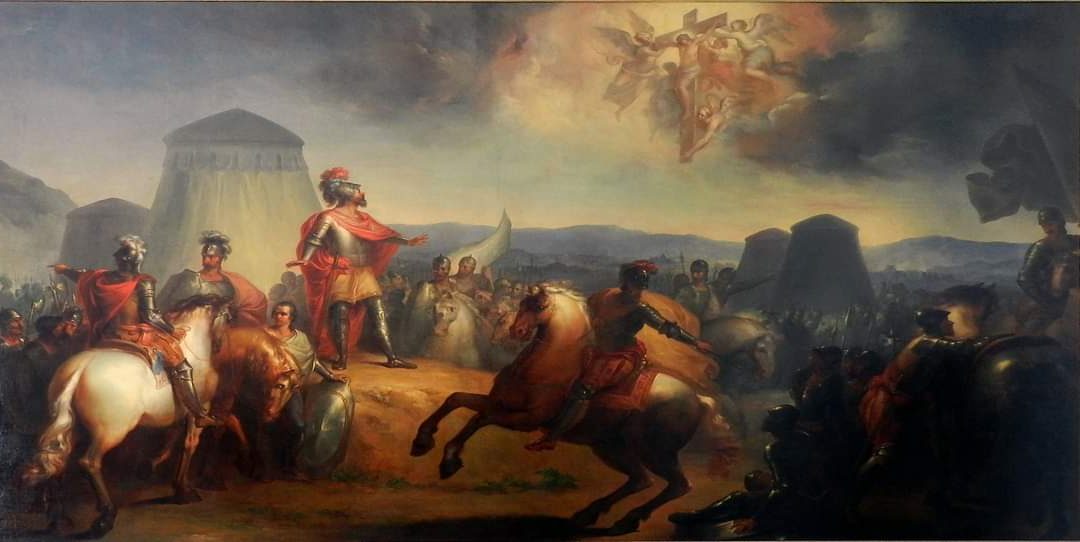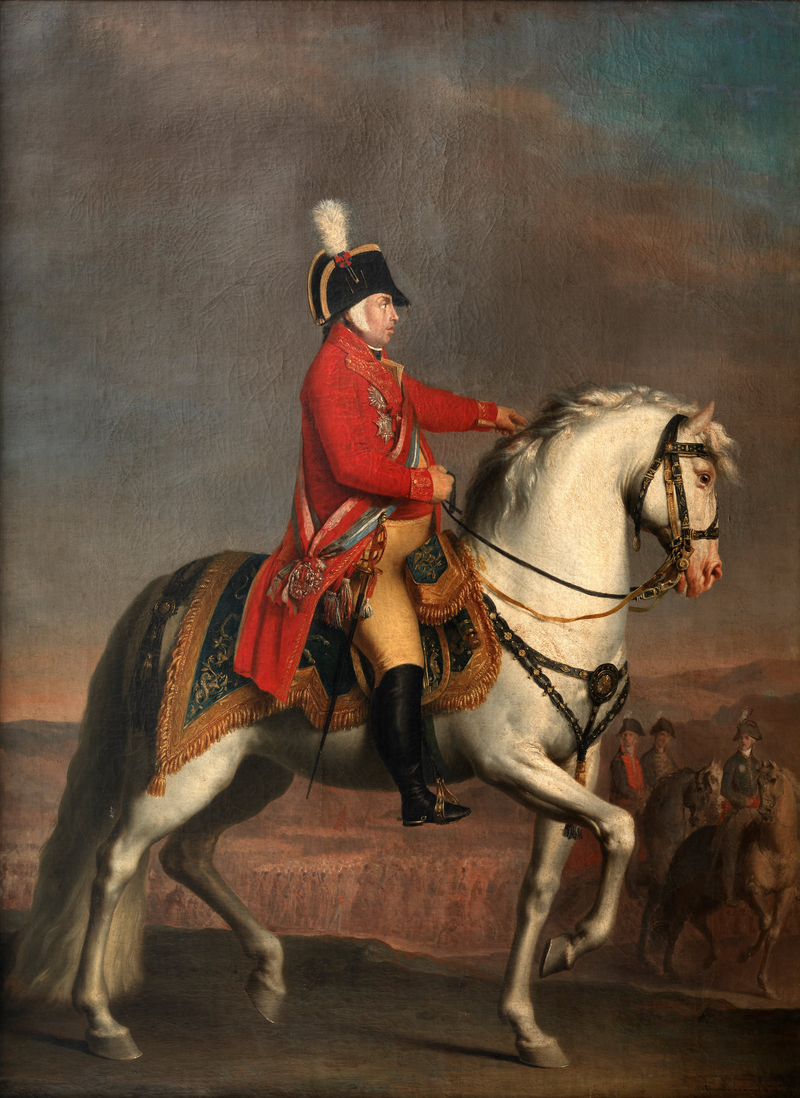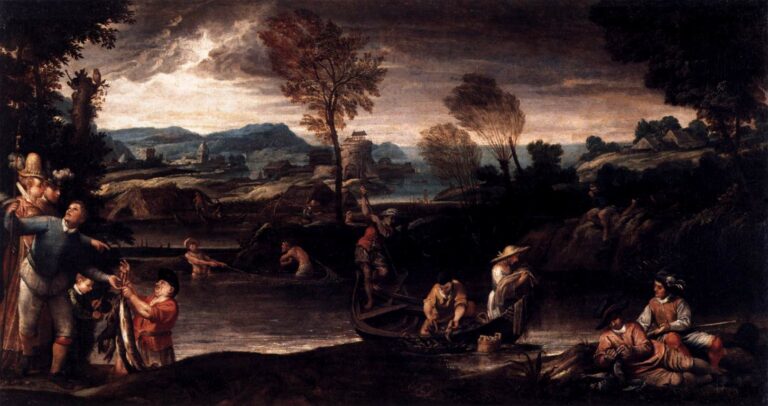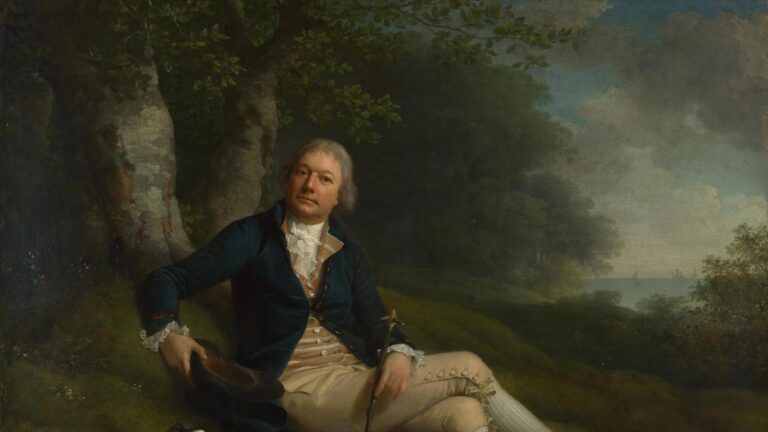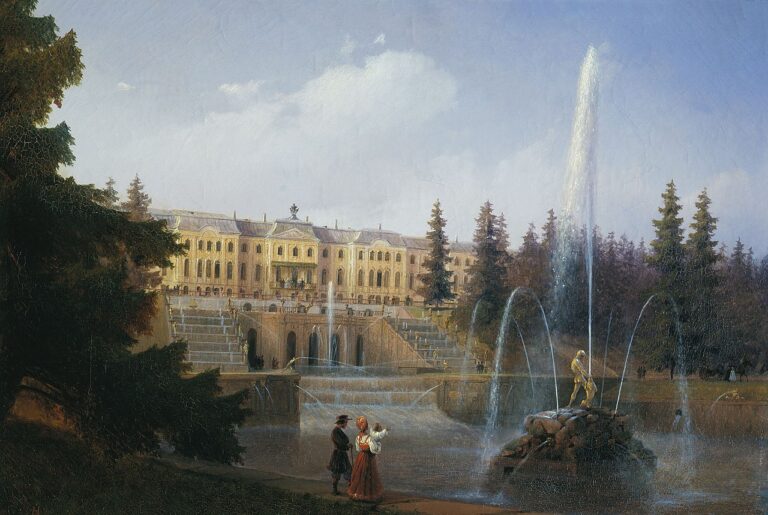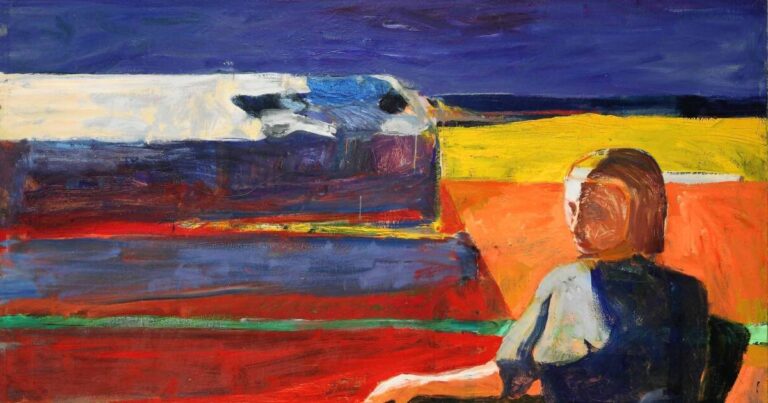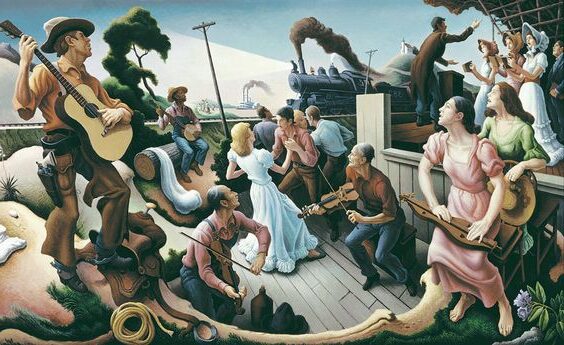Domingos Sequeira: Painter of Portuguese Romanticism
Born: 10 March 1768, Lisbon, Kingdom of Portugal
Death: 8 March 1837, Rome, Papal States
Art Movement: Neoclassicism, Romanticism
Nationality: Portuguese
Teacher: Antonio Cavallucci
Institution: Casa Pia de Lisboa, Portugal
Domingos Sequeira: Painter of Portuguese Romanticism
Life and Career of Domingos Sequeira
Domingos António de Sequeira rose from humble beginnings to become one of Portugal’s most celebrated painters. His talent and skill earned him a place at the royal court and took him to Rome to study.
Early Years and Education
Domingos Sequeira was born on March 10, 1768 in Belém, Lisbon. His father worked as a boatman. Despite his poor background, Sequeira showed artistic talent from a young age.
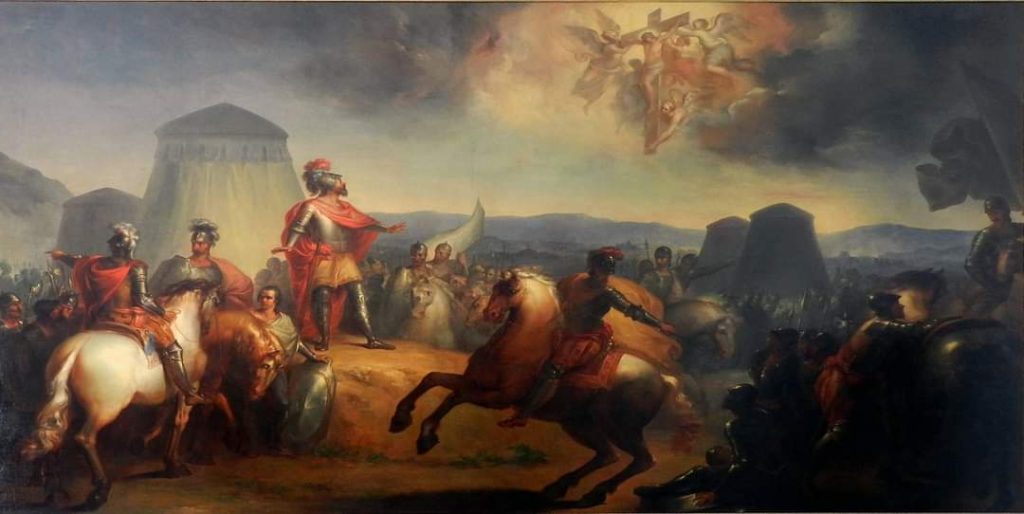
O Milagre de Ourique, 1793 at the Musée Louis-Philippe
He got his start at Casa Pia, a charity school in Lisbon. There, he took art classes and refined his skills. His natural abilities quickly became clear to his teachers.
As a teenager, Sequeira won a scholarship to study in Rome. This was a turning point in his career. In Rome, he trained under Italian painter Antonio Cavallucci.
Rise to Prominence
After returning to Portugal, Sequeira’s reputation grew rapidly. His portraits and religious paintings impressed the nobility.
By his late 20s, he was getting commissions from important patrons. His style blended neoclassical and early romantic elements.
In 1802, Sequeira was named First Court Painter. This prestigious role put him in charge of royal portraits and decorations.
Influence of Rome
Sequeira spent two periods living and working in Rome. The city had a big impact on his art.
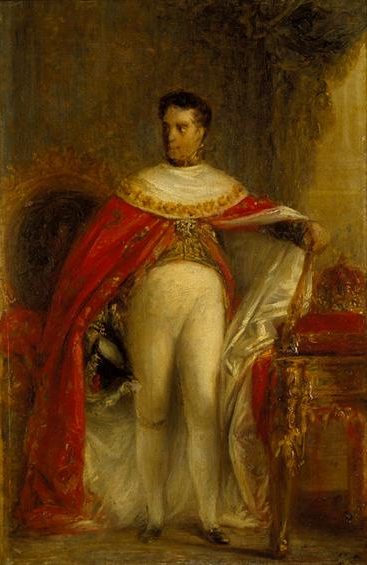
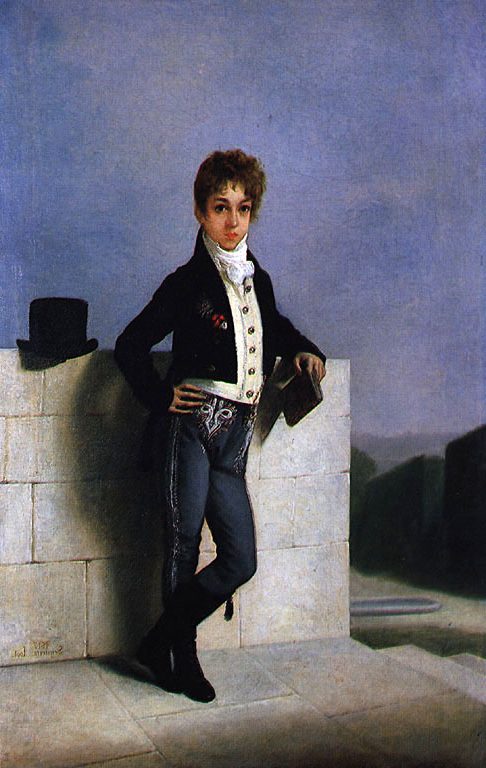
He studied classical sculpture and Renaissance masterpieces. This shaped his use of light, color, and composition.
In Rome, Sequeira also connected with other European artists. He absorbed new ideas about romanticism and history painting.
Court Painter to King John VI
As court painter, Sequeira created official portraits of the royal family. He decorated palaces and designed ceremonies.
King John VI relied on Sequeira’s artistic vision. The painter helped shape the visual identity of the Portuguese court.
Sequeira’s work from this period shows his skill at flattering portrayals. He gave the royals a sense of dignity and authority in his paintings.
Artistic Style and Major Works
Domingos Sequeira blended Neoclassical and Romantic styles in his paintings. He created notable works for the Portuguese royal court and helped introduce lithography to Portugal.
Neoclassicism and Romanticism
Sequeira’s art mixed Neoclassical precision with Romantic emotion. His early works showed clear Neoclassical influences. He used careful lines and balanced compositions.
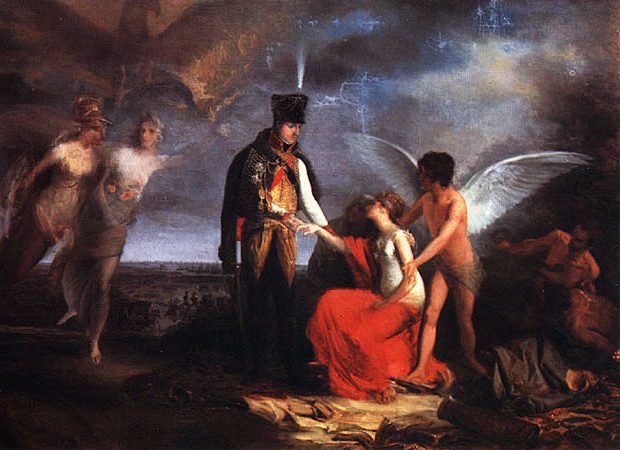
Junot Protegendo a Cidade de Lisboa (Junot Protecting the City of Lisbon), 1808
As his career progressed, Sequeira added more Romantic elements. His later paintings had bolder colors and more dramatic scenes. This shift can be seen in works like “The Adoration of the Magi” from 1828.
Sequeira often painted religious and historical subjects. He excelled at capturing light and shadow in his pieces.
Notable Commissions
Sequeira received many important commissions during his career. He painted for the Portuguese royal family and other elite patrons.
One of his most famous works is “The Miracle of Ourique”. This large painting shows a key moment in Portuguese history. It depicts a vision that inspired King Afonso I before a battle in 1139.
Sequeira also painted “Prince John Reviewing the Troops”. This work shows the future King John VI of Portugal. It highlights Sequeira’s skill with portraits and military scenes.
Development of Lithography
In his later years, Sequeira helped bring lithography to Portugal. Lithography is a printing method that allows artists to create multiple copies of an image.
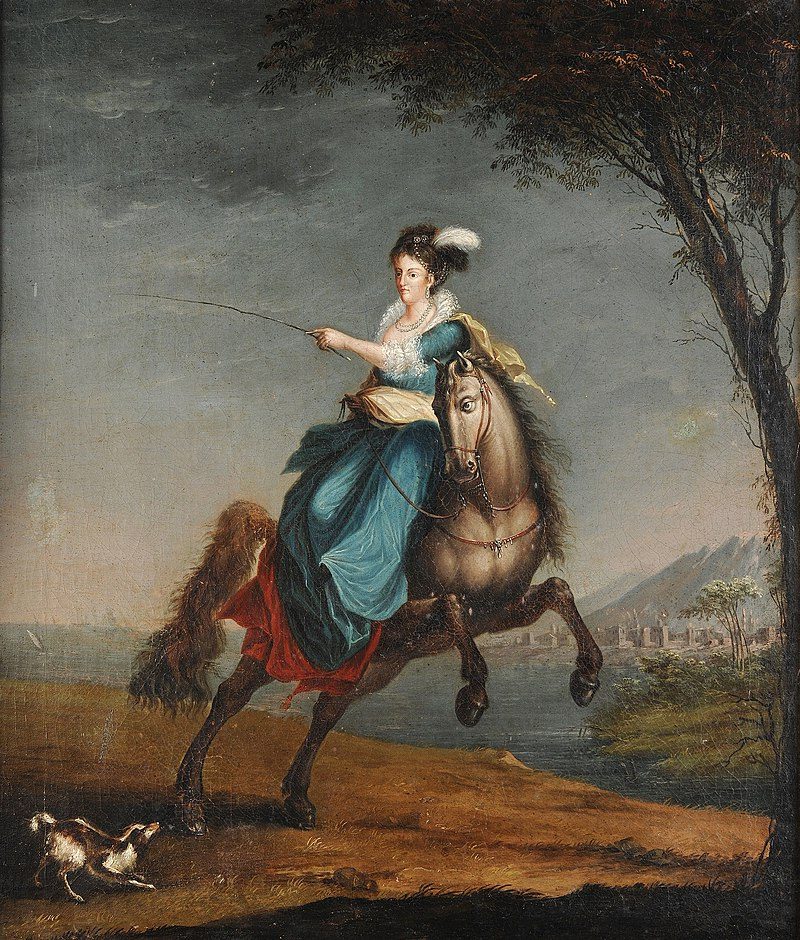

Sequeira embraced this new technique. He used it to make prints of his drawings and paintings. This helped spread his art to a wider audience.
His lithographs often featured allegorical subjects. One example is his print of “Time” and “Death”. These works show Sequeira’s interest in symbolic themes.
Legacy and Influence
Domingos Sequeira left a lasting mark on Portuguese art. His works and teachings shaped future artists and institutions.
Museu Nacional de Arte Antiga
The Museu Nacional de Arte Antiga in Lisbon houses many of Sequeira’s important works. His paintings “The Adoration of the Magi” and “The Miracle of Ourique” are on display there.
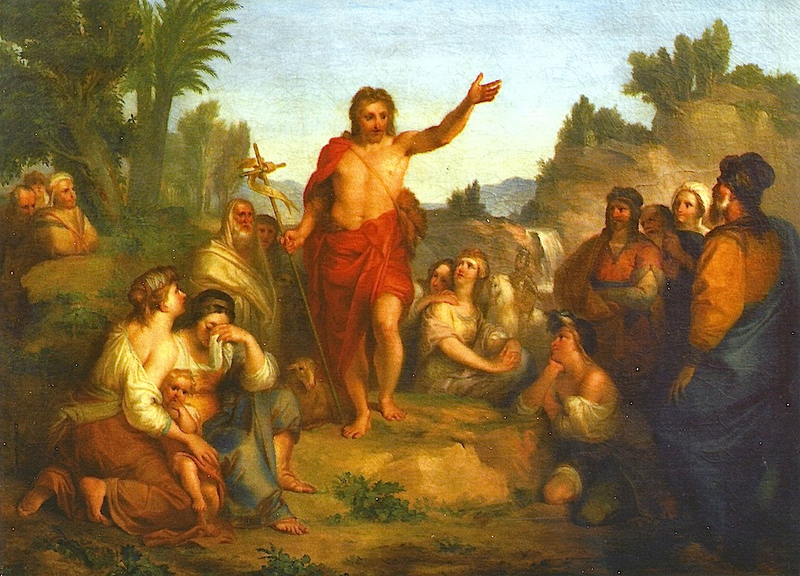
Pregação de S. João Baptista, 1793 by Domingos Sequeira
These pieces show Sequeira’s skill with religious themes and historical subjects. Visitors can see how he blended Neoclassical and Romantic styles.
The museum also has some of his drawings and sketches. These give insight into his creative process.
Portuguese Academy of Fine Arts
Sequeira played a key role in founding the Portuguese Academy of Fine Arts in 1836. He helped set up the school’s first courses and programs.
His ideas about art education shaped how painting was taught in Portugal. The Academy trained many artists who came after him.
Sequeira’s own works became models for students to study and learn from. His legacy lived on through the artists who studied at the Academy.
Impact on Later Artists
Sequeira’s style influenced many Portuguese painters in the 19th century. His use of color and light inspired Romantic artists who came after him.
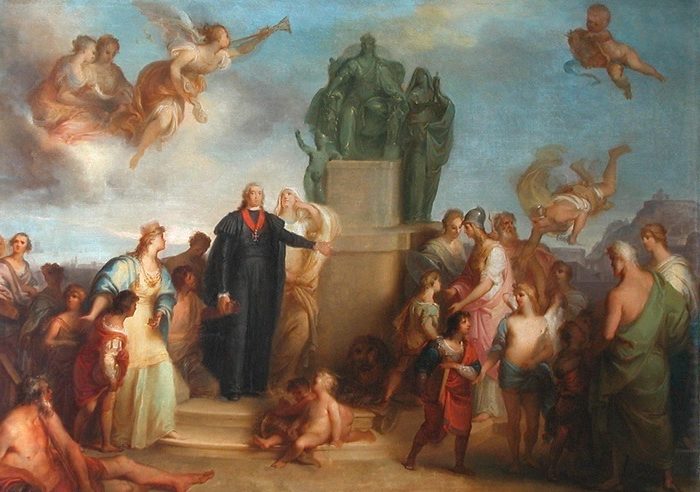
Alegoria à Fundação da Casa Pia, 1792-1794 at the Musee du Louvre
His religious paintings, like “The Last Judgment,” showed how to blend drama with spiritual themes. This approach affected how later artists tackled similar subjects.
Sequeira’s portraits, including his Self-Portrait, set new standards for capturing personality. His skill in this area inspired future Portuguese portrait painters.
Some say his late works even hinted at trends that would emerge in modern art. This shows how forward-thinking his art was for its time.
Frequently Asked Questions
Domingos Sequeira was a famous Portuguese painter who made significant contributions to art in the late 18th and early 19th centuries. His work spanned different styles and subjects, leaving a lasting impact on Portuguese art history.
What era did Domingos Sequeira actively participate in as an artist?
Domingos Sequeira was active as an artist in the late 18th and early 19th centuries. He worked during a time of transition in European art.
Sequeira’s career began in the 1780s and continued until his death in 1837. This period saw major changes in art styles and political landscapes across Europe.
Which art movements was Domingos Sequeira associated with?
Sequeira’s work showed influences from both Neoclassicism and Romanticism. His early training in Rome exposed him to Neoclassical ideals.
As his career progressed, Sequeira incorporated more Romantic elements into his paintings. This blend of styles made his work unique and influential.
What are some of Domingos Sequeira’s most acclaimed works?
One of Sequeira’s notable works is the “Allegory to the Constitution of 1822.” This painting showcases his skill in creating symbolic and political art.
Sequeira also painted many portraits and religious scenes. His work for the Portuguese royal court, including projects at the Ajuda Palace, earned him great recognition.
How has Domingos Sequeira contributed to Portuguese art history?
Sequeira played a key role in bringing new artistic styles to Portugal. He helped bridge the gap between traditional Portuguese art and modern European trends.
As a court painter, Sequeira created works that documented important figures and events in Portuguese history. His paintings offer valuable insights into the culture and politics of his time.
Where can Domingos Sequeira’s artwork be viewed today?
Many of Sequeira’s paintings can be seen at the National Museum of Ancient Art in Lisbon. This museum holds a significant collection of his work.
Other Portuguese museums and galleries also display Sequeira’s art. Some of his pieces have been featured in special exhibitions that highlight his contributions to Portuguese art.
What techniques and styles did Domingos Sequeira employ in his paintings?
Sequeira was skilled in oil painting and drawing. He often used bold colors and dramatic lighting effects in his work.
His style combined careful attention to detail with expressive brushwork. Sequeira’s paintings often featured grand, theatrical compositions. This was especially true in his historical and allegorical works.

